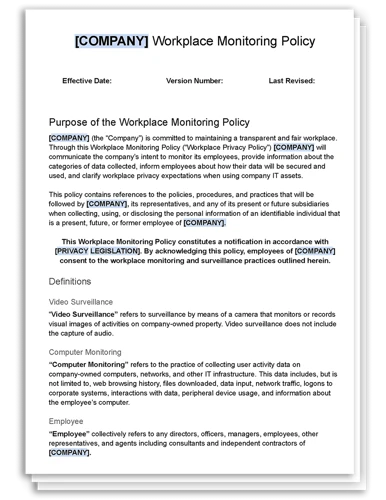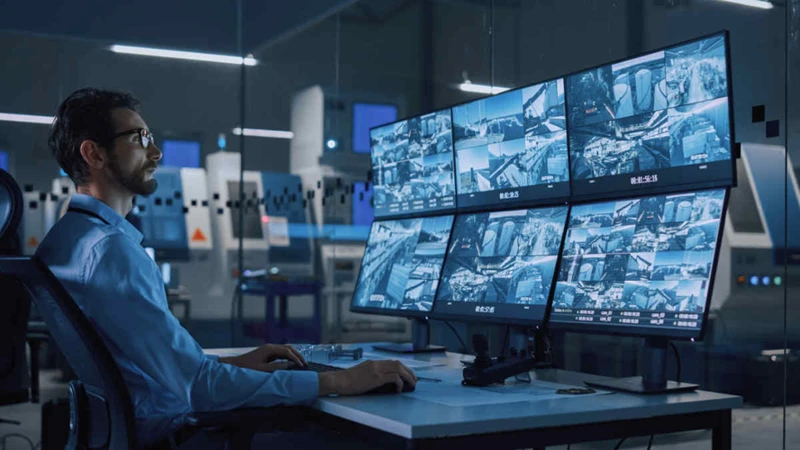In an age where technology pervades every aspect of our lives, the workplace has not been left untouched. Among the myriad of technological tools employers use for various purposes, video monitoring has become increasingly prevalent. However, as much as this technology can serve legitimate business interests, it also raises significant concerns regarding employee privacy rights. This article delves into the intricate balance between an employer’s right to monitor their premises and the employee’s right to privacy, exploring the legal landscape, ethical considerations, and best practices for employers.
The Legal Framework Governing Employee Video Monitoring

Understanding the legal parameters within which video monitoring is allowed is crucial for both employers and employees. Different jurisdictions have varying laws, but most tend to establish a balance between an employer’s need to protect its property and interests and an employee’s expectation of privacy. This section outlines the general legal principles applicable to video surveillance in the workplace, including consent, notification requirements, and limitations on where cameras can be placed.
Consent and Notification: Navigating the Essentials

One of the primary legal considerations is whether employers need to obtain consent from employees before implementing video surveillance. Additionally, the extent to which employees must be notified about the presence of cameras and the purpose of monitoring is a critical aspect. This part of the discussion focuses on the importance of transparency and the potential legal repercussions of failing to properly inform and obtain consent from employees.
Privacy Expectations in Different Workplace Areas

Not all areas within a workplace are equal when it comes to privacy expectations. While common areas like hallways and lobbies might be deemed acceptable for video monitoring, more private areas such as bathrooms, locker rooms, and possibly even offices, are off-limits. This section addresses the nuances of where video surveillance is considered reasonable and where it infringes on privacy rights.
The Role of Video Monitoring in Employee Performance Evaluation
Employers might be tempted to use video surveillance not only for security purposes but also as a tool for employee performance evaluation. This raises further privacy concerns and questions about the fairness and accuracy of such assessments. This part explores the ethical implications of using video footage to evaluate employee performance and discusses alternative, less intrusive methods of assessment.
Protecting Sensitive Information in the Age of Video Surveillance
In workplaces dealing with sensitive or confidential information, video surveillance poses an additional risk of unauthorized access to such data. This segment discusses strategies for safeguarding sensitive information in environments where video monitoring is present, including encryption, access controls, and physical security measures.
Employee Rights to Access Video Footage
Employees might have legitimate reasons to request access to video footage, whether to contest a disciplinary action or to provide evidence of wrongdoing. This section outlines the circumstances under which employees can access surveillance footage and the process for making such requests.
Video Monitoring and Third-Party Privacy
The presence of visitors, clients, or contractors in the workplace introduces another layer of complexity to video surveillance practices. This part examines the privacy rights of third parties and how employers can navigate the challenges of protecting these rights while maintaining security.
The Impact of Technological Advancements on Workplace Privacy
As surveillance technology becomes more sophisticated, the potential for intrusion into employees’ personal privacy increases. This section looks at emerging technologies, such as facial recognition and AI-powered analytics, and discusses their implications for employee privacy.
Best Practices for Implementing Video Surveillance Ethically
Given the potential legal and ethical pitfalls associated with video monitoring, it’s essential for employers to adopt best practices that respect employee privacy while safeguarding business interests. This part provides practical guidelines for implementing video surveillance in a manner that balances these considerations.
Developing a Clear Video Monitoring Policy
A well-defined video monitoring policy is central to maintaining transparency and ensuring compliance with legal and ethical standards. This section emphasizes the importance of a clear policy, detailing what it should cover, including the scope of surveillance, the rationale behind it, and the rights and responsibilities of all parties involved.
Consensual Surveillance: Fostering a Culture of Trust
Fostering a workplace culture that values trust and mutual respect can alleviate many of the concerns associated with video surveillance. This part discusses the benefits of obtaining employee buy-in and how consensual surveillance can lead to a more positive work environment.
The Role of Employee Representation in Decision-Making Processes
Involving employees or their representatives in decisions related to video monitoring can help address privacy concerns and improve policy acceptance. This section explores the ways in which employee input can be integrated into the decision-making process and the positive impact it can have on workplace relations.
Confronting Ethical Dilemmas: A Case Study Approach
To illustrate the complex ethical considerations involved in employee video monitoring, this part presents hypothetical case studies. These scenarios highlight common dilemmas faced by employers and offer insights into navigating these challenges in an ethically responsible manner.
In today’s digital age, the balance between workplace safety and employee privacy rights has become a critical conversation. With the increasing use of video surveillance in the workplace, understanding the implications for both employers and employees is essential. For insights into how video surveillance can enhance employee safety, consider reading about video surveillance for employee safety. Meanwhile, the broader scope of video surveillance in workplace safety explores how these measures protect both assets and personnel.
However, the deployment of these technologies raises important questions about privacy. To navigate these waters, familiarize yourself with video surveillance privacy policies, which lay the groundwork for ethical and legal surveillance practices. Moreover, the intersection of cyber security measures with employee video monitoring highlights the need for robust protections against potential cyber threats.
Understanding these facets helps in creating a balanced approach that safeguards both the physical security of the workplace and the privacy rights of employees.
Conclusion
Video monitoring in the workplace presents a complex interplay between legitimate business interests and the privacy rights of employees. Navigating this terrain requires a careful approach that respects legal boundaries and ethical principles. By understanding the legal framework, considering the privacy implications of surveillance technology, and adopting best practices, employers can implement video monitoring in a way that protects their assets without infringing on employee privacy. Ultimately, fostering a culture of transparency, trust, and respect is paramount in achieving a balanced and harmonious workplace environment.







